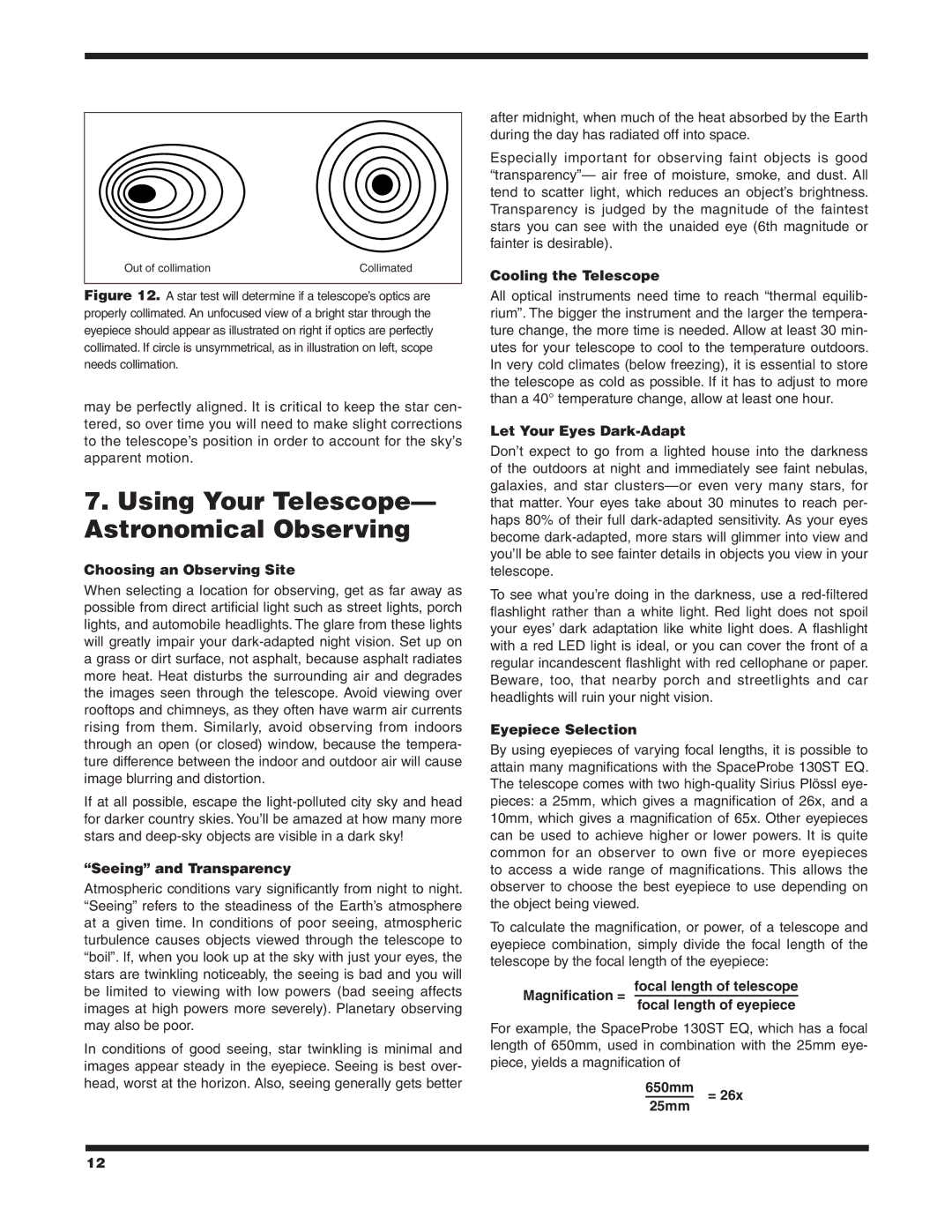
Out of collimation | Collimated |
Figure 12. A star test will determine if a telescope’s optics are properly collimated. An unfocused view of a bright star through the eyepiece should appear as illustrated on right if optics are perfectly collimated. If circle is unsymmetrical, as in illustration on left, scope needs collimation.
may be perfectly aligned. It is critical to keep the star cen- tered, so over time you will need to make slight corrections to the telescope’s position in order to account for the sky’s apparent motion.
7.Using Your Telescope— Astronomical Observing
Choosing an Observing Site
When selecting a location for observing, get as far away as possible from direct artificial light such as street lights, porch lights, and automobile headlights. The glare from these lights will greatly impair your
If at all possible, escape the
“Seeing” and Transparency
Atmospheric conditions vary significantly from night to night. “Seeing” refers to the steadiness of the Earth’s atmosphere at a given time. In conditions of poor seeing, atmospheric turbulence causes objects viewed through the telescope to “boil”. If, when you look up at the sky with just your eyes, the stars are twinkling noticeably, the seeing is bad and you will be limited to viewing with low powers (bad seeing affects images at high powers more severely). Planetary observing may also be poor.
In conditions of good seeing, star twinkling is minimal and images appear steady in the eyepiece. Seeing is best over- head, worst at the horizon. Also, seeing generally gets better
after midnight, when much of the heat absorbed by the Earth during the day has radiated off into space.
Especially important for observing faint objects is good “transparency”— air free of moisture, smoke, and dust. All tend to scatter light, which reduces an object’s brightness. Transparency is judged by the magnitude of the faintest stars you can see with the unaided eye (6th magnitude or fainter is desirable).
Cooling the Telescope
All optical instruments need time to reach “thermal equilib- rium”. The bigger the instrument and the larger the tempera- ture change, the more time is needed. Allow at least 30 min- utes for your telescope to cool to the temperature outdoors. In very cold climates (below freezing), it is essential to store the telescope as cold as possible. If it has to adjust to more than a 40° temperature change, allow at least one hour.
Let Your Eyes Dark-Adapt
Don’t expect to go from a lighted house into the darkness of the outdoors at night and immediately see faint nebulas, galaxies, and star
To see what you’re doing in the darkness, use a
Eyepiece Selection
By using eyepieces of varying focal lengths, it is possible to attain many magnifications with the SpaceProbe 130ST EQ. The telescope comes with two
To calculate the magnification, or power, of a telescope and eyepiece combination, simply divide the focal length of the telescope by the focal length of the eyepiece:
Magnification = focal length of telescope focal length of eyepiece
For example, the SpaceProbe 130ST EQ, which has a focal length of 650mm, used in combination with the 25mm eye- piece, yields a magnification of
650mm = 26x 25mm
12
